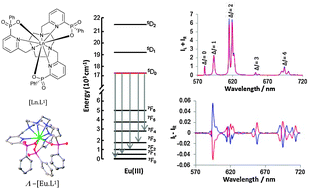Lanthanide complexes as chiral probes exploiting circularly polarized luminescence
Abstract
Optical probes that provide information about local chirality have been developed based on changes to the circular polarisation of emitted light. Highly emissive complexes of lanthanide ions are ideally suited for CPL


 Please wait while we load your content...
Please wait while we load your content...